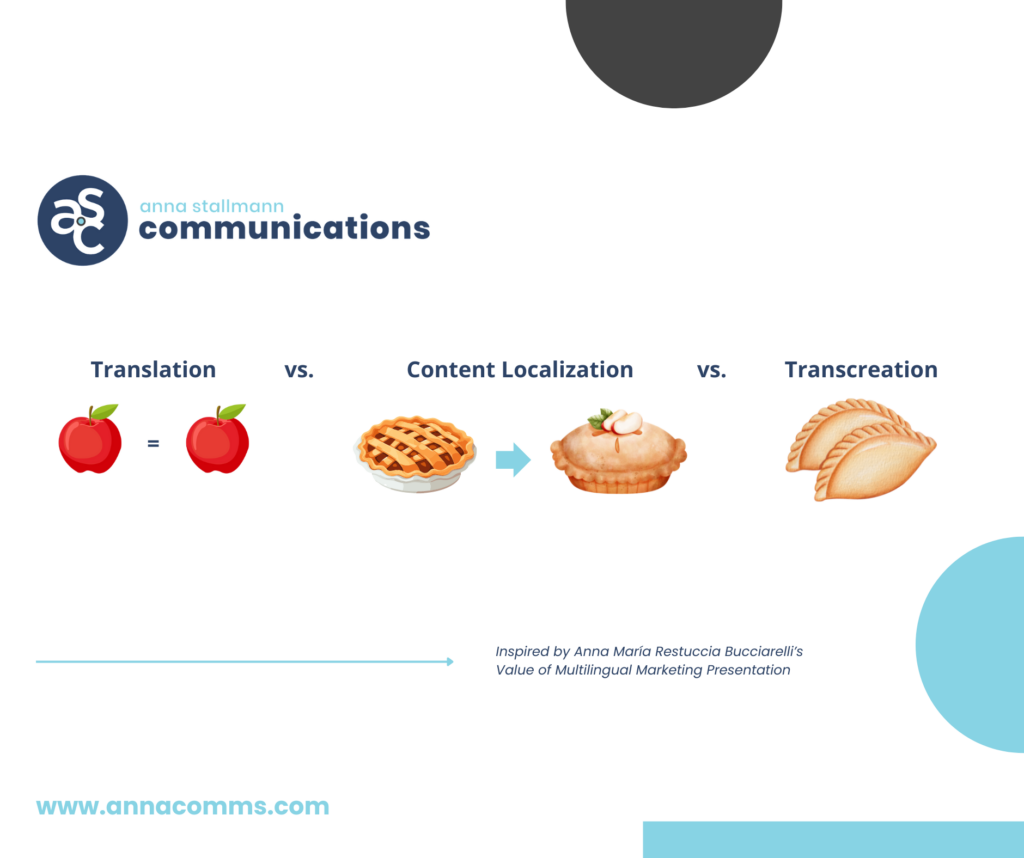By: Yesenia Gonzalez, Digital Account Executive (and bilingual Spanish and English speaker)
Authenticity and trust are the pillars of effective communications to any audience. Crafting stories that resonate with an audience builds those pillars. However, even the most compelling story can get lost in translation–in more ways than one.
Our digital and creative team recently had an opportunity to attend the 2024 MARCON marketing conference in Oklahoma City. At Anna Stallmann Communications, we have opportunities for professional development to stay current with the most up-to-date marketing and public relations practices. Anna María Restuccia Bucciarelli, CEO and founder of Bocca Bilingual, led the Value of Multilingual Marketing session at MARCON. As a bilingual Spanish speaker, this session at the conference appealed to me as a way to further my understanding of how my skills translate practically in my own work.
Here are considerations to make when marketing to multilingual audiences.
Multilingual audiences are not an afterthought
Did you know that nearly 1 in 5 people in the United States speak a language other than English? Multilingual marketing isn’t just taking the language in a marketing campaign and providing a word-for-word translation–it’s making the message of that campaign resonate with the intended audience in a culturally sensitive way.
Cultures are not monoliths. Every group has its own traditions, holidays, and cultural expectations–just to name a few considerations. Being attentive to those differences paves the way for authentic connection. When appropriate, acknowledging special dates and traditions from your audience’s culture in marketing materials fosters connection.
Consider degrees of fluency
It is important to consider the intended audience’s degree of fluency in a language. Just because someone belongs to a specific cultural group and speaks the same language as that group does not mean that a translation should be broadly applied. The first language a person learns makes them a native speaker of that language, while a bilingual speaker knows the rules of two languages. A fluent speaker can hold a conversation in the target language.
Word for word translations aren’t always the way to go. Not all multilingual speakers have the same cultural understanding and fluency. A person’s country of origin, level of assimilation, language proficiency, social status, and religion are other factors that contribute to meaning in a message. An effective marketing campaign will consider those factors in crafting a message that leaves an impact.
Types of language conversions
Translation, content localization, and transcreation perform similar functions, but have different applications. Translation refers to converting words or messages word for word. Content localization adapts the words to better fit a specific audience’s tastes while preserving the central meaning. Finally, transcreation completely transforms a message, which is adapted to the cultural context of its audience. The asset does not receive a direct translation and may have major changes in presentation, but transcreation preserves the intended tone and message.

Don’t rely solely on AI for translation needs
Artificial intelligence has its limitations when it comes to translating. AI programs can miss context and language usage. Additionally, specialized fields–such as law and medicine–require precise translations to avoid misinterpretations with potentially serious consequences. AI translations may not fully capture the history, culture, and attitudes of the target audience, so marketing to multilingual audiences requires research to understand their lived experiences.
Translation is not one size fits all
Translating messages is not limited to translation across languages. The mark of a compelling storyteller is being able to translate stories across different demographics–age, religion, gender identity, and region. All of these tips are applicable to these types of audiences–and more. No matter what message you’re trying to convey, being attuned to your audience’s needs and levels of understanding is the key to creating meaningful messages that make a long-lasting impact.
At ASC, we create audience-centric messaging, and work hard to ensure nothing is ever lost in translation. Learn more about ASC results.
